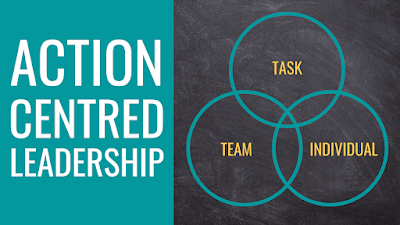Lean Tip
#3136 – Organize Your Materials and Parts for Efficient Retrieval
The
amount of money (and time) that is wasted through a lack of organization can be
staggering.
This
particularly true if materials or components are stored at various points in
the manufacturing process – with time spent retrieving these items making up a
significant portion of your costs.
Making
sure your storage and warehouse facility is well organized will improve this
“picking” process, which can be further improved through the use of suitable
parts or picking bins.
The
increased speed at which the parts or components arrive at your manufacturing
line will lead to increased productivity, as well as helping to avoid delays
and production even stopping whilst waiting for items. This is also true for
reducing picking errors, which organization can again help with.
And
better organization can also highlight shortages of any stock more quickly,
again preventing downtime.
Lean Tip
#3137 – Maximize the Use of Space
Maximizing
the use of space can be a surprisingly effective way to improve your
manufacturing productivity. The amount of time employees spend moving from one
area to another has a direct impact on the efficiency of your manufacturing.
By
rearranging your factory floor to put commonly used equipment or machines
closer to each other, to keep of stock of parts or components nearer to where
they will be needed, and make each trip as efficient as possible (i.e. move
multiple items with a tote, and ensure picking errors are minimized through
well-organized stock and parts bins) can all have a big impact.
Ultimately,
you may wish to consider rearranging your manufacturing floor layout in order
to create a smoother workflow or both components, product and people.
Lean Tip
#3138 – Troubleshoot and Maintain Machines
Regular
maintenance and troubleshooting of your machinery and equipment is crucial in
maintaining and improving productivity.
This is
also where it is important to train – and then trust – the employees that use
these on a daily basis. They will be the first to spot an issue, and if
familiar with the equipment can potentially fix the issue with little
disruption caused.
Besides
this, knowing the signs that something is not running well (or even at
capacity) can be critical in avoiding larger problems. It is far easier to keep
a machine running through maintenance and care than it is to repair it once
something has failed.
Lean Tip
#3139 – Cut Down on Quality Waste (Material Scrap)
Every
damaged component that cannot be used costs money. Every unfinished product
costs money. Every item returned by your customers costs money – and hurts your
brand and business reputation.
It is
therefore essential to protect items when being stored (picking bins) and when
being moved (handling totes).
And
whilst it is also understandable that mistakes can and will occur, if this
becomes too frequent then getting to the root cause and identifying a fix
(either training / recruitment, new processes, equipment etc.) is critical.
Lean Tip
#3140 – Remember to be Realistic With Your Goals
Expectations
from your customers, tight deadlines and pressures from external factors (for
example logistics and delivery times) can all lead to targets becoming distorted
and often unachievable.
In cases
such as this, it is important to manage expectations diplomatically and ensure
corners are not cut – whether this is through safety or quality. This could
lead to employees become demotivated, which can lead to worsening of
productivity rather than improvements.
As a
result, once you have a full picture of your current productivity, set
realistic goals that focus on the quality of output, punctuality and that do
not compromise safety.
And
involving employees and gaining their feedback on initiatives can help them
feel engaged and valued too.
Lean Tip
#3141 – Start by Eliminating Waste.
This is
one of the core principles of lean manufacturing. Typically, you may use a
value stream analysis to identify wasteful activities occurring at the plant.
At the same time, you can intensify efforts to find more efficient ways to add
value to the company’s product line.
Lean Tip
#3142 – Reduce Unnecessary Inventory.
The cost
of maintaining excess inventory generally outweighs the potential benefits you
might realize. It can tie up resources, slow down response time and complicate
quality-control issues. Overstocking may become particularly problematic if
some of the inventory eventually becomes obsolete-which is often the case.
Lean Tip
#3143 – Extend Employee Autonomy.
Give more
employees authority to make decisions and provide them with the tools and
methodology for doing so. You can take this step even further by establishing
teams to measure work progress and improve techniques. Frequently, companies
find that viable solutions may be presented by employees below the management
level. Plus, this kind of involvement can improve morale and performance.
Lean Tip
#3144 – Focus on Continual, Long-Term Improvement
If you have
succeeded in implementing Lean across your value stream(s), then you must
continue with the good habits built during the transition. A critical aspect of
Lean is continuous learning and improvement. In a sense, there is no ‘final’
goal except to simply removing (and preventing) wasteful processes and
delivering value to the customer. Be it a change in manufacturing technology or
even complacency, new wasteful processes could emerge in the future.
Lean Tip
#3145 – Take the Time to Plan Your Road Map
Once
you’ve made the decision to go all in on lean, it will be tempting to jump in
head first. But, just like getting buy-in from your stakeholders, every minute
you spend planning will save you time (and frustration) down the road. Plus,
you need a map so you know where you’re going.
Lean Tip
#3146 – Ask the 5 Whys to Improve Your Problem Solving Culture
Ready to
get to the root cause of whatever ails your process, with your whole team on
board? Start by asking why. In fact, plan to ask it a solid four more times as
part of the 5 Whys, a Lean Six Sigma strategy that will move you past the
symptoms to the heart of the problem. When you include coworkers and other
stakeholders in offering alternative answers to the stream of whys, the
collaborative effort can go a long way in fostering a problem solving culture
that embraces change and values input from all.
Lean Tip
#3147 – Use Standardized Work to Scale Your Business
Manufacturers
stick to a standard process because doing the same thing over and over minimizes
errors and waste. Similarly, when you create a checklist for every task,
product, and process in your organization, you’re making your team’s work
standardized, reducing variation and the competition of individuals’ preferred
methods of completing projects. This standardization of workflow,
responsibility, quality, and interaction with the customer is essential as you
grow your business and expand your workforce. Even the scope, timing, and
content of meetings can be standardized. This is how you establish best
practices and continually improve on the way to scaling your business.
Lean Tip
#3148 – Make Continuous Improvement a Goal for Your Business
One of
the things that you need to have in mind all the time is your business and your
industry keeps changing. You need to be quick in adapting your business to
these changes. And this is where continuous improvement plays an important
role. As you adapt to the changing environment, you should take what you
already learned and change things for the better.
The
reality is that there are always areas to be improved when you have a small
business. From production to customer service, accounting or operations.
Lean Tip
#3149 – Collect Performance Data and Act on It
Data
collection on your production performance has great value. It can help you
connect the dots when you discover inefficiencies. Measuring and tracking
activity provides you with insights that can contribute to waste elimination
and continuous improvement.
Combining
this data into dashboards allows many eyes to view and assess it. For example,
if throughput is down, you need to investigate why. You can look at data from
all these streams, and you may find that a piece of equipment is
underperforming. You’ve found the root cause and can address it.
Lean Tip
#3150 – Keep Your Eyes Open to Improvement Opportunities
You won’t
always work on strategy changing projects, but there’s usually the opportunity
to make small improvements everywhere. By regularly making small improvements,
you’ll witness a significantly more capable process long term. The sum of the
parts really can be greater than the whole.
Given
advances in technology, best practice and changing customer needs, there will
always be a better way. So make sure you are constantly looking out for these
opportunities and encourage others to do the same.






